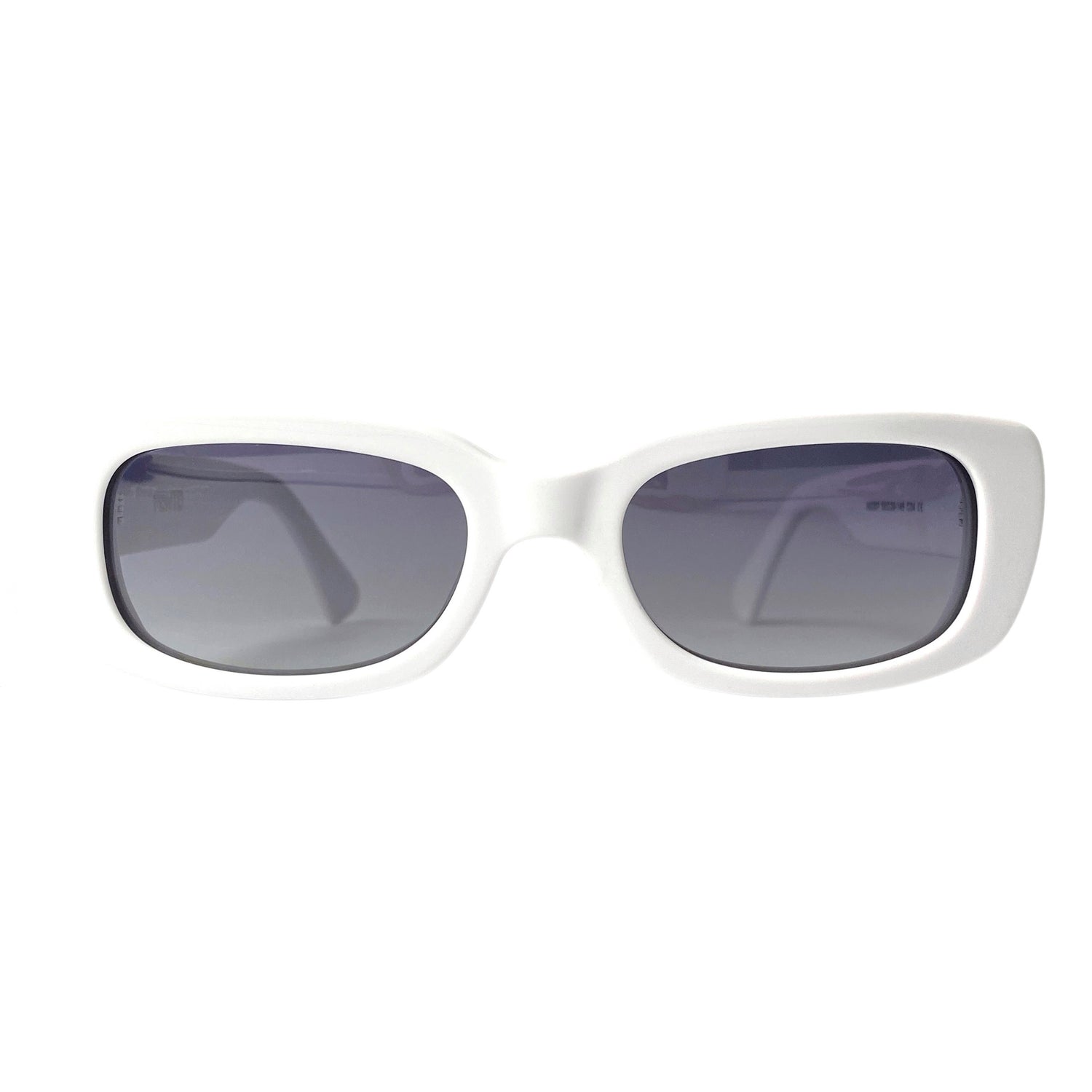
What is the Difference Between Polarised and Non Polarised Sunglasses?
Share
Sunglasses are a staple accessory for many people, providing both style and protection from the sun's harmful rays. However, when it comes to choosing the right pair, you may come across terms like polarised and non-polarised sunglasses. Understanding the difference between these two types of sunglasses can help you make an informed decision and ensure you find the perfect pair for your needs.
Understanding the basics of sunglasses
Before delving into the specifics of polarised and non-polarised sunglasses, it's important to understand the basics. Sunglasses are designed to protect your eyes from the sun's ultraviolet (UV) rays, which can cause long-term damage to your eyesight. Additionally, they help reduce glare and enhance visual clarity, making it easier and more comfortable to see in bright conditions.
Did you know that sunglasses have been around for thousands of years? In ancient times, the Inuit people of the Arctic region used to make goggles out of walrus ivory, with narrow slits to protect their eyes from the harsh glare of the snow. These early sunglasses may not have had the same UV protection as modern ones, but they were certainly effective at reducing glare.
The science behind sunglasses
When light from the sun reaches our eyes, it scatters in all directions. This scattered light creates glare, which can be particularly bothersome when you're driving, participating in outdoor activities, or simply trying to relax in the sun. Sunglasses work by filtering out certain wavelengths of light, allowing only a specific range of light to pass through and reach your eyes.
Imagine wearing sunglasses as if you were looking through a filter. This filter blocks out the unwanted light, such as glare and harmful UV rays, while allowing the desired light to pass through. This selective filtering helps to protect your eyes and improve your vision in bright conditions.
The role of UV protection in sunglasses
One of the key aspects of any pair of sunglasses, whether they are polarised or non-polarised, is their ability to block out harmful UV rays. UV rays are divided into three categories: UVA, UVB, and UVC. UVA and UVB rays are the most relevant to our eye health, as they can cause conditions like cataracts and macular degeneration.
Reputable sunglasses, such as the ones offered by Sun Amante, feature lenses that provide 100% UV protection. This means they effectively block all UVA and UVB rays, keeping your eyes safe from potential harm.
When it comes to UV protection, it's important to note that not all sunglasses are created equal. Some cheaper sunglasses may claim to offer UV protection, but they may not meet the necessary standards. It's always best to invest in a trusted brand that guarantees proper UV protection for your eyes.
Furthermore, UV protection is not just important on sunny days. Even on cloudy or overcast days, UV rays can still penetrate through the clouds and reach your eyes. So, wearing sunglasses with UV protection should be a year-round habit to ensure the long-term health of your eyes.
The concept of polarised sunglasses
Polarised sunglasses have become increasingly popular in recent years due to their ability to reduce glare. Glare occurs when light waves bounce off flat surfaces, such as water, roads, or glass, and become concentrated in a horizontal direction. This concentrated glare can be particularly blinding and hinder your ability to see clearly.
Imagine yourself on a sunny day, enjoying a leisurely stroll along a picturesque beach. As you walk, the sun's rays bounce off the shimmering waves, creating a dazzling display of light. However, this beautiful scene can quickly turn into a visual challenge when the glare becomes overwhelming. That's where polarised sunglasses come to the rescue.
How do polarised sunglasses work?
Polarised sunglasses are equipped with a special filter that blocks horizontal light waves and allows only vertical light waves to pass through. This filter works by containing tiny molecules that are aligned in a specific direction. As a result, when horizontally polarised light waves come into contact with the filter, they are absorbed, reducing the intensity of glare.
Let's delve deeper into the science behind these remarkable sunglasses. The polarising filter is made up of a series of microscopic vertical slits that act like a gatekeeper for light. When light waves approach the filter, those that are vibrating horizontally are unable to pass through the slits. Instead, they are absorbed by the filter, preventing them from reaching your eyes. On the other hand, the vertically vibrating light waves are able to pass through the slits unimpeded, allowing you to see the world with reduced glare.
The benefits of polarised sunglasses
Polarised sunglasses offer several advantages over their non-polarised counterparts. Firstly, they provide superior glare reduction, making them ideal for outdoor activities such as fishing, boating, or driving in bright conditions. By eliminating glare, polarised lenses enhance visual clarity and reduce eyestrain, allowing you to see with greater comfort and accuracy.
Imagine yourself on a fishing trip, standing on the edge of a tranquil lake. The sun's rays reflect off the water's surface, creating blinding glare that obscures your view of the fish beneath. However, with a pair of polarised sunglasses, the glare is magically tamed, revealing the underwater world in all its glory. You can now spot the elusive fish with ease, enhancing your chances of a successful catch.
Additionally, polarised sunglasses can also enhance contrast and depth perception, making objects appear more defined. This is particularly useful when engaging in outdoor sports, such as golf or skiing, where accurate depth perception is crucial for performance and safety.
Imagine yourself on a ski slope, gliding down the powdery snow with the wind rushing through your hair. The crisp mountain air fills your lungs as you navigate through the twists and turns. With polarised sunglasses, the snowy terrain becomes more vibrant and detailed. The contrasting shades of white and blue are intensified, allowing you to assess the slopes with precision and make split-second decisions to avoid any obstacles.
In conclusion, polarised sunglasses are not just a fashion statement, but a practical solution to combat glare and enhance visual performance. Whether you're enjoying a day at the beach, engaging in outdoor activities, or simply driving on a sunny day, these sunglasses can make a world of difference. So, next time you step out into the bright sunlight, don't forget to don a pair of polarised sunglasses and experience the world in all its glare-free glory.
The concept of non-polarised sunglasses
Non-polarised sunglasses, on the other hand, do not feature the same polarising filter as their counterparts. This means they do not block horizontal light waves and therefore do not provide the same level of glare reduction.
How do non-polarised sunglasses work?
Non-polarised sunglasses primarily function by reducing the amount of overall light that enters your eyes. Although they do not target specific light waves like polarised sunglasses, they still provide a certain level of UV protection. This makes them a suitable choice for individuals who may not be exposed to intense glare or who prioritize other factors such as fashion or budget.
The benefits of non-polarised sunglasses
Non-polarised sunglasses still offer valuable protection against UV rays. While they may not provide the same level of glare reduction as polarised sunglasses, they are often more affordable and come in a wider variety of styles and designs. Non-polarised sunglasses can be a fashionable accessory while still shielding your eyes from harmful UV rays.
Polarised vs non-polarised sunglasses: A comparison
When deciding between polarised and non-polarised sunglasses, it's essential to consider the specific advantages of each option. Let's take a closer look at the key differences:
Differences in glare reduction
Polarised sunglasses are designed specifically to reduce glare caused by horizontally polarised light waves. They provide superior glare reduction and ensure clearer vision in bright conditions. On the other hand, non-polarised sunglasses offer a general reduction in overall light, but do not target glare as effectively as their polarised counterparts.
Differences in visual clarity
As mentioned earlier, polarised sunglasses enhance visual clarity by reducing glare and enhancing contrast. This can be particularly beneficial in situations where precise vision is essential, such as driving or engaging in outdoor sports. Non-polarised sunglasses, while still providing some protection, may not deliver the same level of visual clarity.
Differences in cost
Polarised sunglasses are often priced slightly higher than non-polarised sunglasses due to the added technology and materials required to manufacture the polarising filter. However, the price difference can vary depending on the brand, design, and additional features of the sunglasses. Non-polarised sunglasses, on the other hand, tend to be more affordable, making them a popular choice for those on a budget.
Choosing the right sunglasses for you
When it comes to selecting the perfect pair of sunglasses, several factors should be taken into consideration:
Factors to consider when buying sunglasses
Firstly, determine the primary purpose for wearing sunglasses. If you frequently engage in outdoor activities where glare is a significant concern, such as fishing or skiing, polarised sunglasses may be the better choice for you. If fashion and budget are your top priorities, non-polarised sunglasses can offer adequate UV protection while still allowing you to express your personal style.
The impact of your lifestyle on your choice of sunglasses
Furthermore, consider your lifestyle and how sunglasses fit into it. If you spend ample time outdoors or participate in activities that require clear vision and reduced glare, investing in polarised sunglasses may greatly enhance your visual experience. On the other hand, if you only wear sunglasses occasionally and prefer a wider range of style options, non-polarised sunglasses may offer the versatility you desire.
Ultimately, the decision between polarised and non-polarised sunglasses comes down to personal preference and specific needs. Both types provide UV protection and shield your eyes from harmful rays, with polarised sunglasses offering superior glare reduction. Explore the range of options available on Sun Amante's website (sunamante.co.uk) to find the perfect pair of sunglasses that combines style, functionality, and protection for your eyes.








